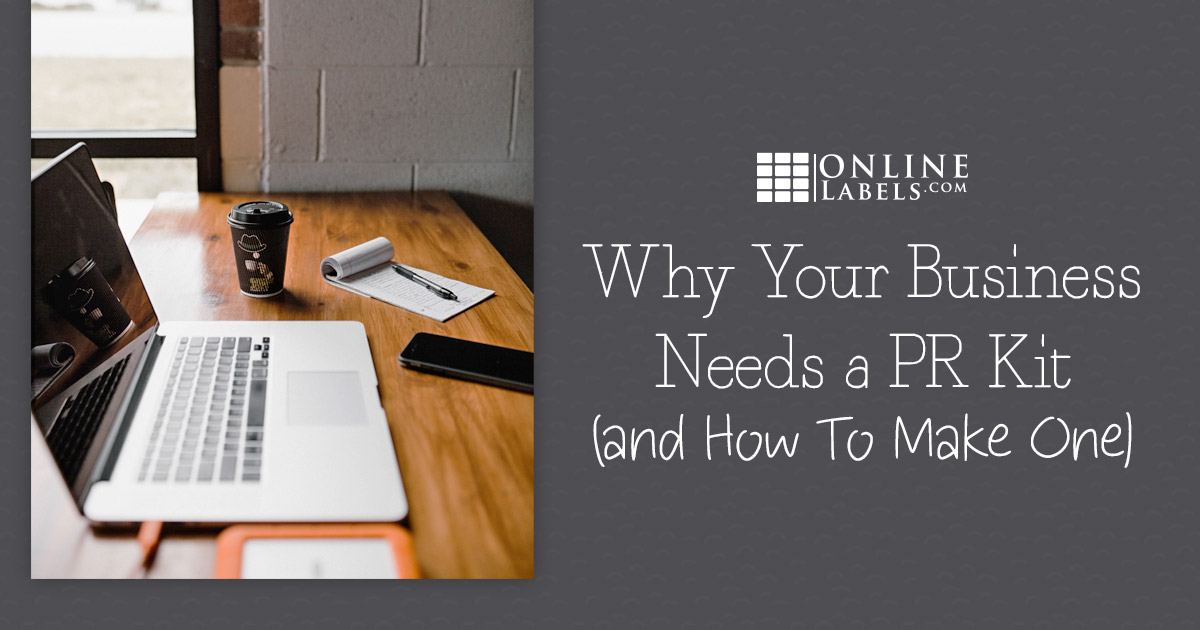Why Your Business Needs a PR Kit (and How to Make One)

Also known as a press kit or media kit, this digital tool is a game changer for your business when it comes to—you guessed it—press.
Putting together a digital "kit" of photos and information that showcase your brand, leaders, and team, creates an easy way for journalists to add quality pictures and factual information when covering your business. Stock photos or boilerplate information do nothing for your brand. Instead, direct the narrative yourself and offer up the photos you want used and the fun tidbits you’d enjoy reading about a brand you love. Keep in mind, you don’t want to just share flat facts; use this opportunity to tell the story of your business.
What should I include in a press kit?
A journalist typically finds your PR kit when they’re already writing about you and want to double check their information. There’s a lot you can share about your business, but make sure to include these basics:
Company Overview
- When your business got started
- Where your offices are located
- Your company’s funding history
- Statistics: the number of customers you serve or other details showing your growth
Contact Information
Make it easy for journalists to find who they can contact for quotes or additional information. This can be someone who is able to set up interviews or help look into requested statistics.
Product Information
Provide a clear and simple description of your products/services and how they work/what they do. Review this information quarterly to ensure the details and pricing are up to date.
Logos
Offer variations of your logo including square and transparent options. Different websites have different requirements, and you want to make sure your logo looks good without any resizing.
Media Assets
Provide high-resolution photos of your team, leadership, and products. Make sure you label each photo clearly so journalists can find the right file. Always, always rename your files. No one knows what IMG_012345 is.
If you want to share video files, either add these to a "Video" folder in your kit, or make sure the file names are clearly named with "video". If you’re able to provide video, it’s especially helpful as b-roll footage for any journalist featuring your brand via video segment.
Disclaimer: This should go without saying, but make sure that you have the legal right to use and share any photos or videos you provide in your PR kit.
Miscellaneous
You can also include executive bios, notable awards, or any other extras you feel are important to telling the story of your business.
Though, keep in mind that journalists won’t have the time to read everything, so keep your information short and skim-able. (Skim-able means using headers or other ways to visually break up the information so journalists can quickly find what they’re looking for.)
How should I lay out my information?
Your written information such as your company overview, contact, and product information should live on something clean and easy to use (read: easy to copy and paste for fewest errors) like a PDF. Try to keep this PDF to two pages or it will quickly become too much for easy use or skimming.
This PDF is also a good place to include any social media handles so the journalist can tag you when the story goes live or include them in the story.
Your media files can live in separate folders within your kit to ensure everything is easy to find. You could have one folder for logos, one for photos, and one for video. Or, if you have a lot of media to share, you can break it down even more to distinguish between types, such as a folder for headshots and team photos, another folder for product photos, etc. Organization depends on how much/what assets you’re including, but remember that this needs to be easy for the journalist to navigate, not you.
I created my PR kit, what’s next?
The next step is to find a good place on your website for your press kit to live. To make sure it’s easy to find, you can include a press kit link in your navigation bar.
While your press kit can’t do the pitching for you, it can increase the likelihood of good press coverage with factual information and high-quality photos.
You’re ready to get started on your very own PR kit! Just remember that it’s for journalists to use, so make it easy to navigate and only include any information you’d want them to know.
Need labels for your business? Get custom printed labels today!


